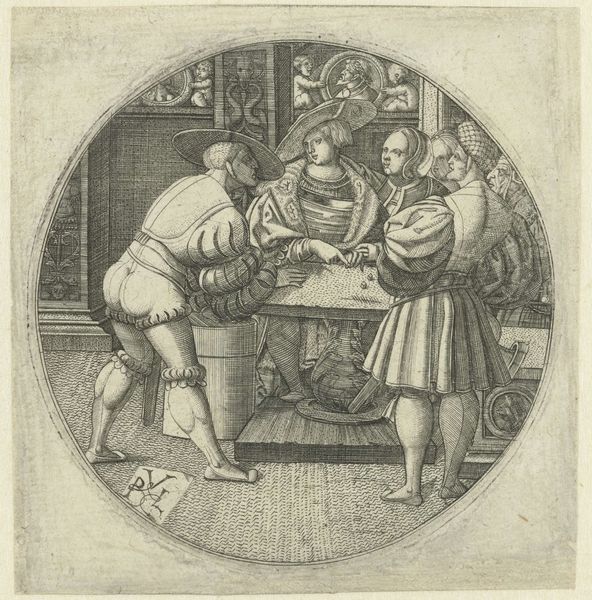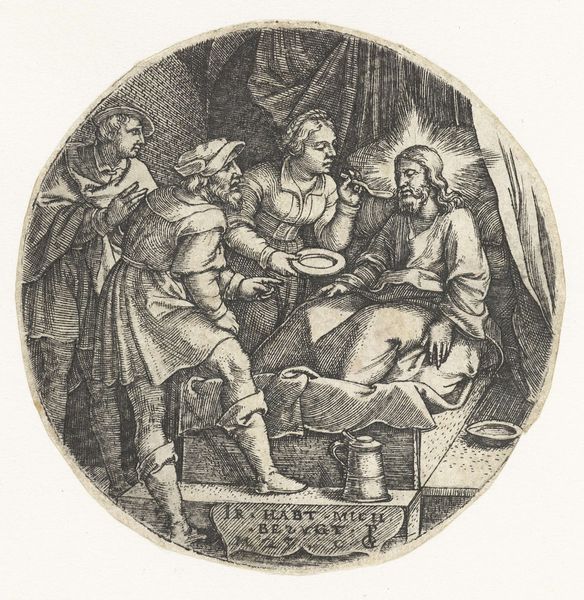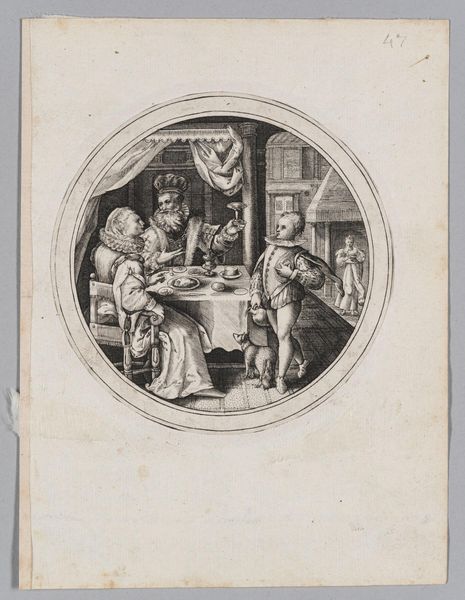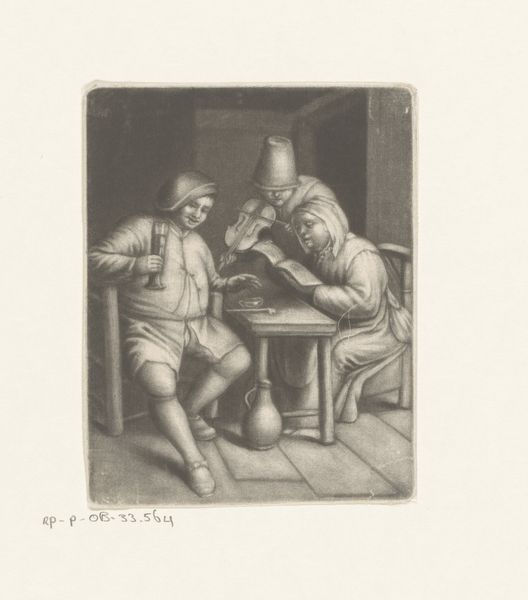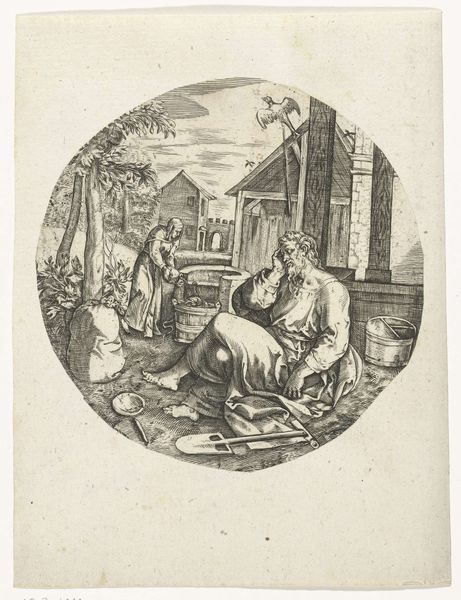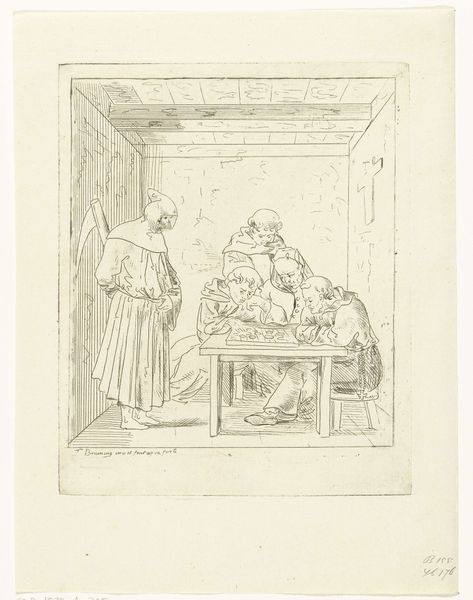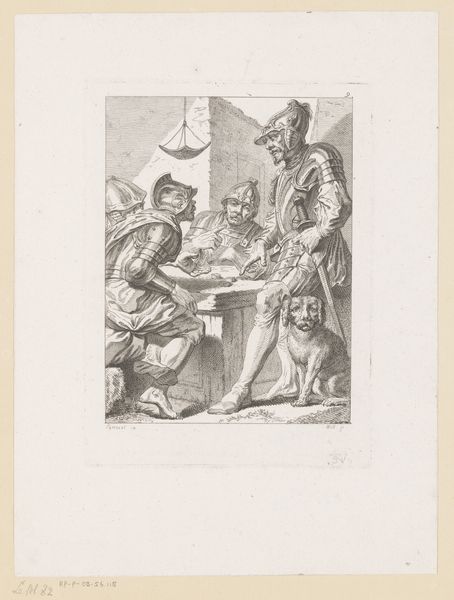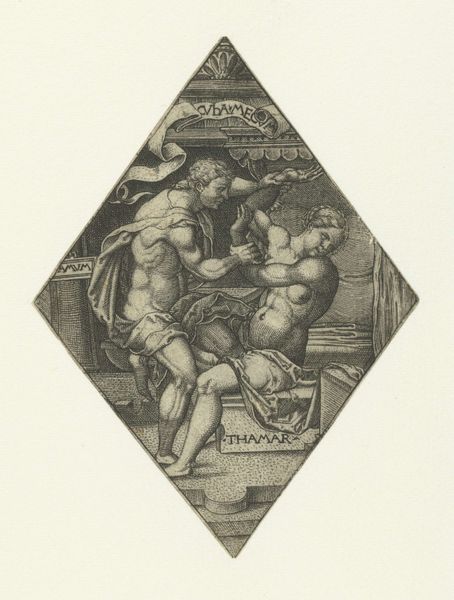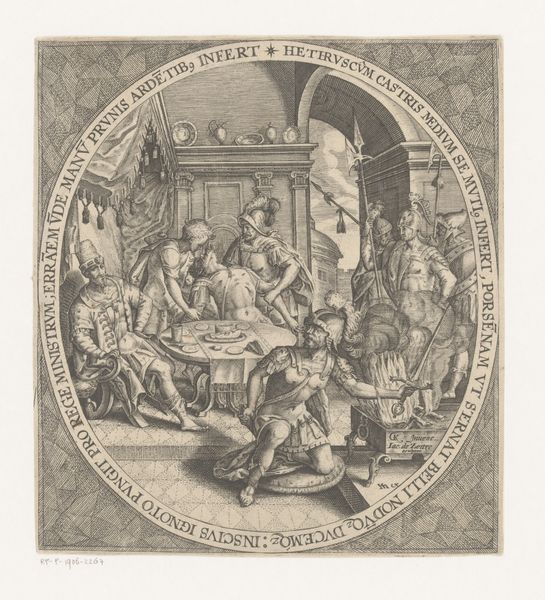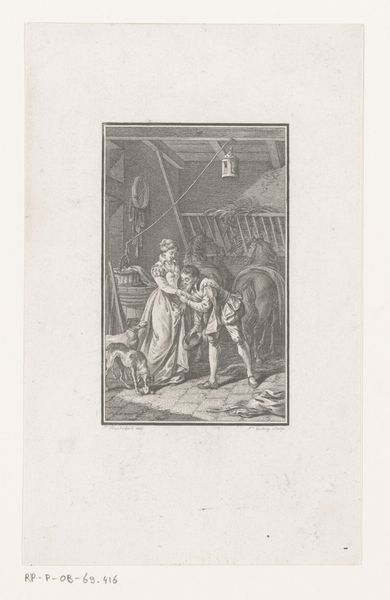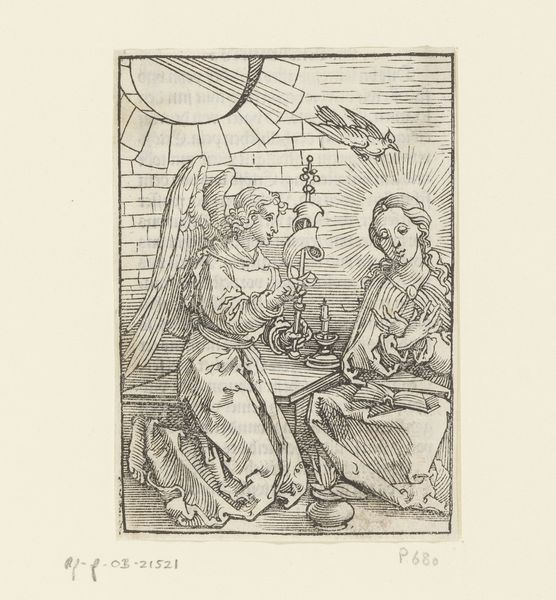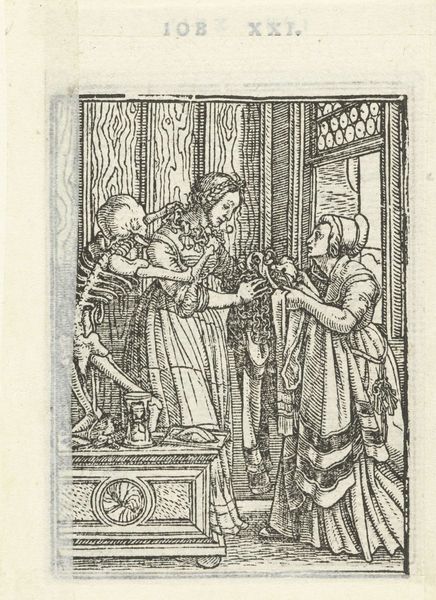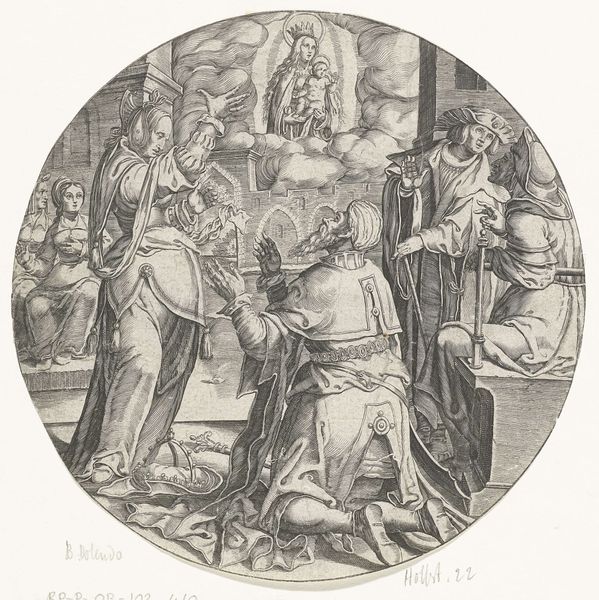
print, engraving
# print
#
figuration
#
11_renaissance
#
line
#
genre-painting
#
northern-renaissance
#
engraving
Copyright: Rijks Museum: Open Domain
Curator: This engraving, created between 1520 and 1530 by the enigmatic Monogrammist PVL, depicts a scene titled "Drie mannen spelen dobbelspel," or "Three Men Playing Dice." Editor: My first thought? A potent sense of tension simmering beneath the surface, don't you think? It's not just a casual game; the air feels thick with anticipation and maybe something darker. Curator: Indeed. Note the meticulous rendering, a hallmark of Northern Renaissance printmaking. The artist uses line work to define form, texture, and spatial relationships. Consider the layering and cross-hatching. Editor: It’s like visual gossip—the fine lines create an intimacy, pulling you right into their clandestine world. Those gestures, too—so precise yet ambiguous. What’s at stake here, do you think? And those garments! I love the volume created around the characters. Curator: The attire definitely places them in a particular socio-economic stratum. Beyond the stylistic and formal concerns, the image invites speculation about its symbolism. Are we witnessing a playful pastime, or a veiled allegory about fortune and fate? Notice the carefully placed jug in the foreground and its interplay with the drapery. Editor: Perhaps it's a warning, a memento mori tucked into everyday life? You've got pleasure and risk dancing a delicate waltz together. The circular format of the engraving itself gives it a feeling of peering into another world. And let's not forget the faces - some almost cartoonish and others extremely detailed, all reacting to one roll. Curator: Such a stark divergence in artistic approaches contributes to the reading of emotional and class separation. There's an academic rigidity meeting a human sensibility. Ultimately, this print embodies an exploration of narrative ambiguity and human psychology through formal conventions. Editor: Absolutely. It makes you wonder about the artist too: Were they on the inside of this gambling ring, a voyeur on the fringes, or maybe just imagining a moralistic scene that can stand the test of time? It certainly speaks volumes, in more ways than one, doesn't it?
Comments
No comments
Be the first to comment and join the conversation on the ultimate creative platform.
